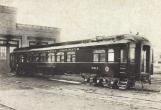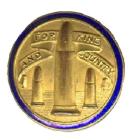1
During the First World War, Canada's railways played a vital role transporting military supplies, foodstuffs, and troops. In the Transcona Shops, workers serviced and maintained the steam locomotives, freight cars, and passenger coaches that were required as part of the war effort. Classified as "essential workers", many men continued their employment at the railway shops with a patriotic fervor.2
World War I military supplies: mess kit, canteen, roll, identification card.141 Regent Avenue West, Winnipeg, Manitoba, Canada
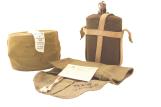
3
The Canadian Government Railways issued special orders to the Transcona Shops, where railway workers converted passenger coaches into military hospital cars. Carpenter, pipefitters, and machinists worked together to remodel the interior of the car, while painters added the final symbols and lettering that completed the transformation.5
Likewise, the Government of Canada transformed a portion of the G.T.P. Railway Shop into a war munitions factory, and so again, beginning in 1915, Transcona had a part in Canada's greatest industrial effort-the production of military arms and supplies.6
Interior view of munitions factory (Transcona Shell Company), Grand Trunk Pacific Railway paint shop1916
Transcona, Manitoba, Canada
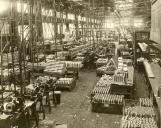 Credits:
Credits:Foote No. 14
7
Located in the former Coach Paint shop of the Car Department, the Transcona Shops site was chosen for its modern facilities, location on the transcontinental railway line, and strong workforce. The industry provided employment for hundreds of men from Transcona and the surrounding area. Between 1915 and 1918, shifts of labourers produced thousands of 18lb artillery shells as they worked around the clock at the "Transcona Shell Company".9
Heavy shipments of shells were transported by rail to the east coast of Canada and then shipped across the Atlantic to the distant shores of Europe for use by the allied forces on the battlefields. The first shipment of shells left the Grand Trunk Pacific Shops in 1915. The Transcona Shops played a major role in supporting the war effort through 1918.11
Transcona residents provided support to those in service on foreign soil by writing letters, wearing regimental pins for family members serving in uniform, and attending sacred concerts in Park Circle. Some families collected patriotic items that were used in the home to show their support. Others provided aid to soldiers' dependents by planting vegetables in vacant lots and purchasing coal for winter heat.13
Despite the burden of daily and weekly chores, wives of service men wrote regularly to their husbands. Women lived the constant fear of receiving a government telegram announcing a death at the front. The local newspaper, the Transcona Times, kept the community up to date with developments on the front.14
First shipment of shells from the Transcona Shops1915
Transcona, Manitoba, Canada
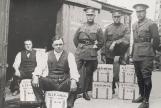 Credits:
Credits:Photographer W.H. Girling
